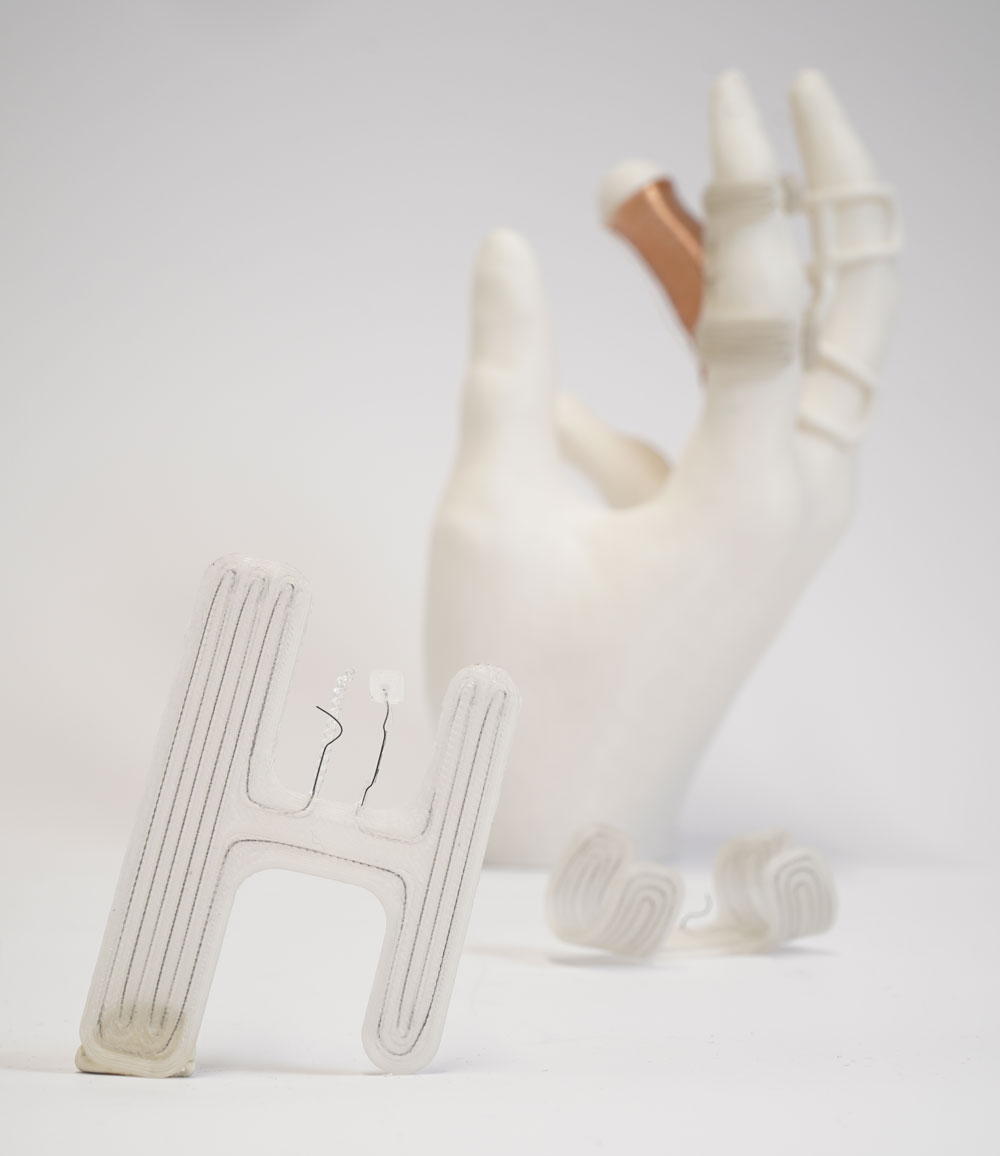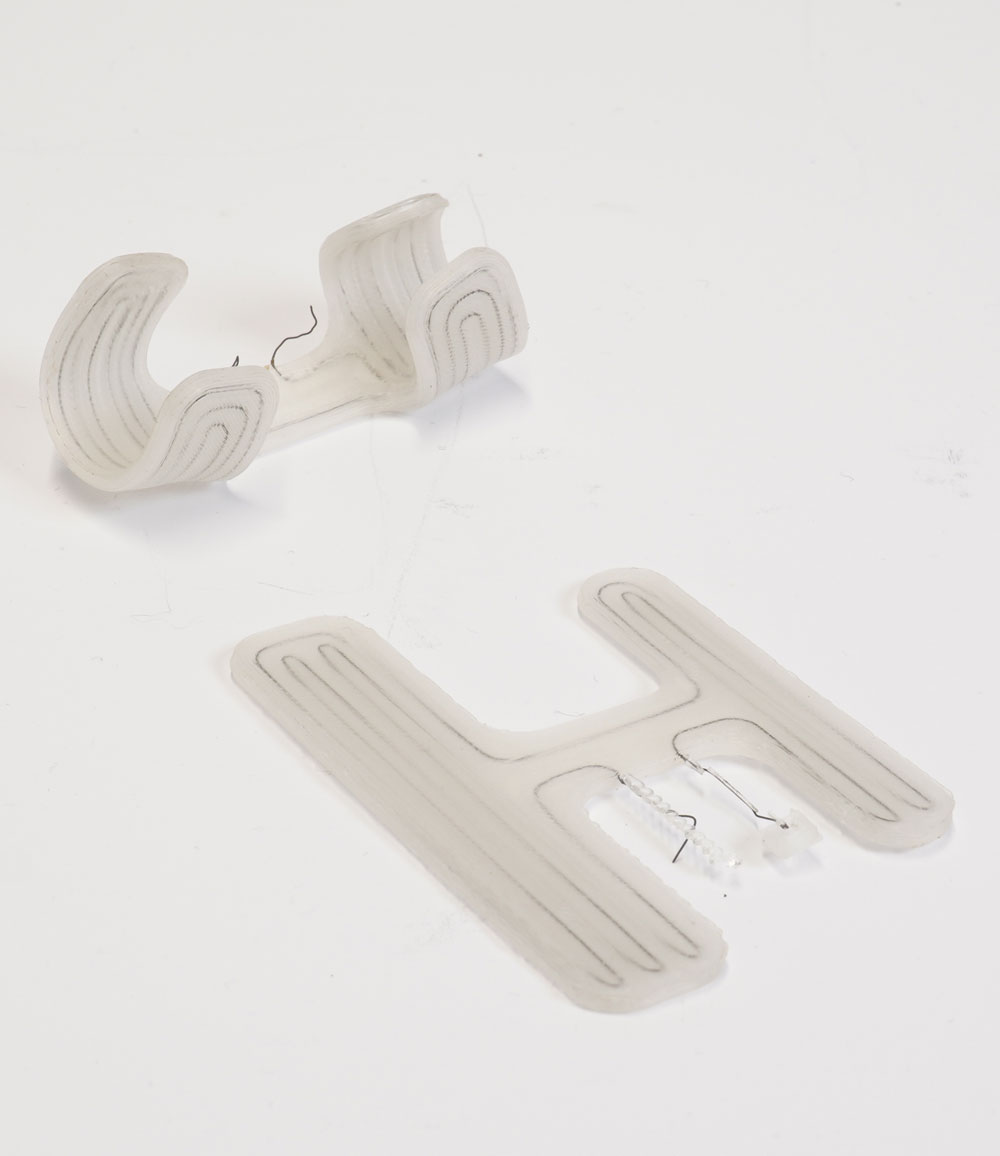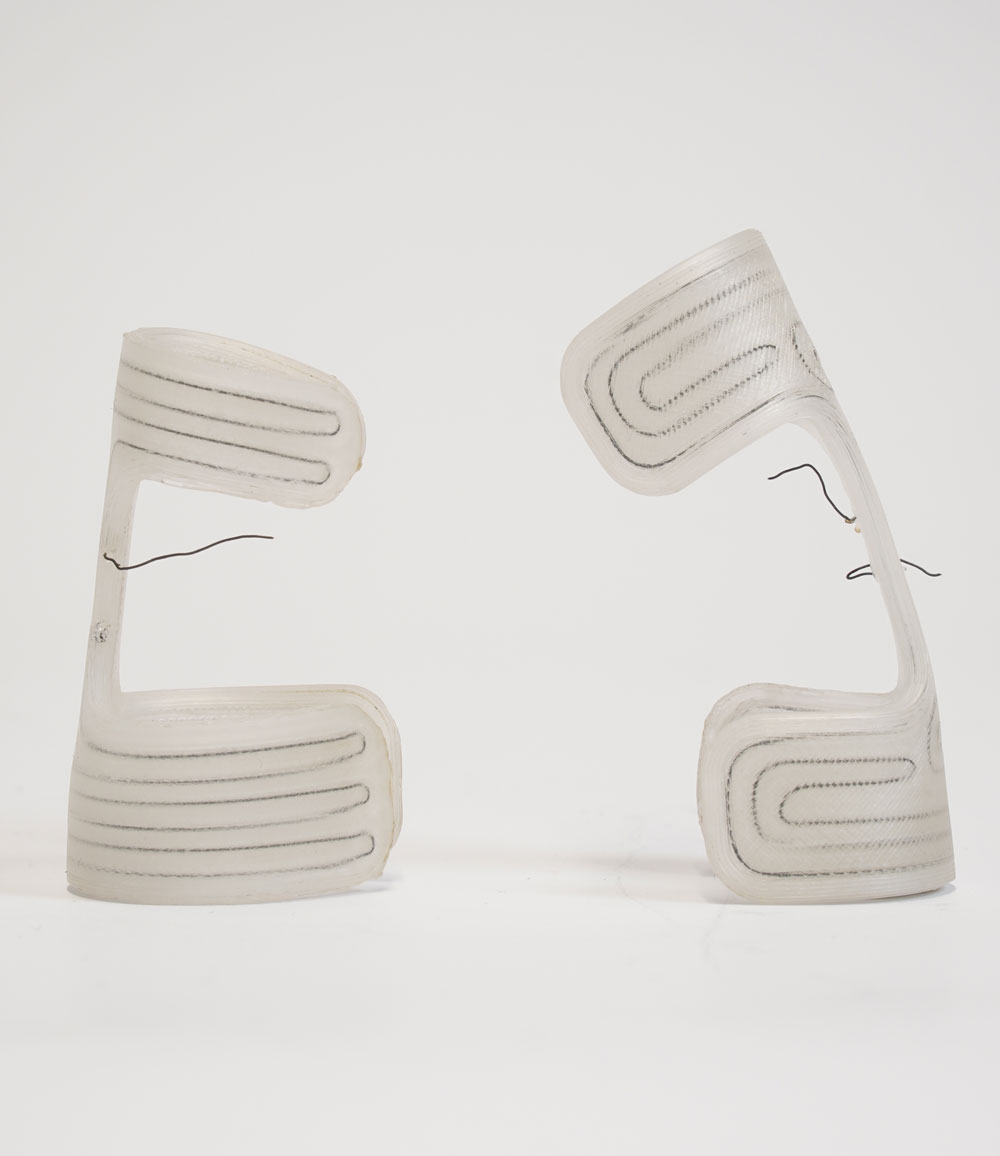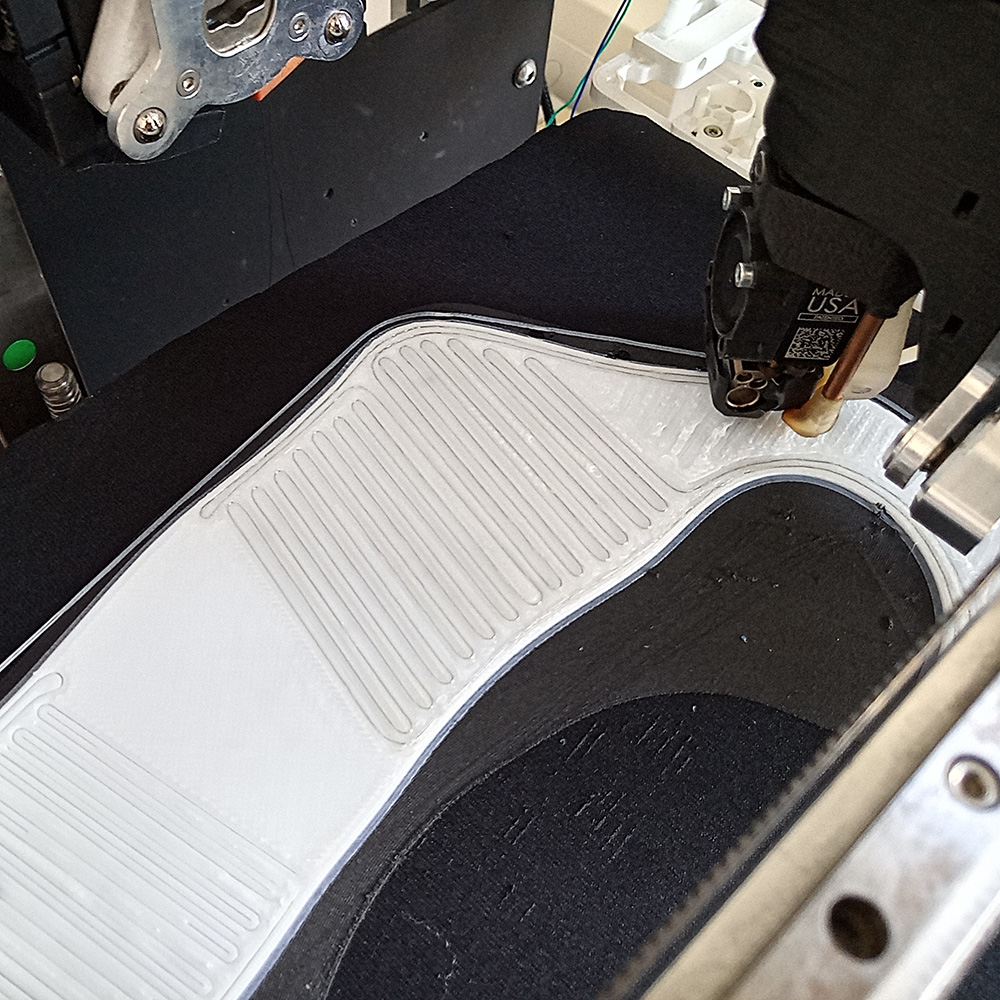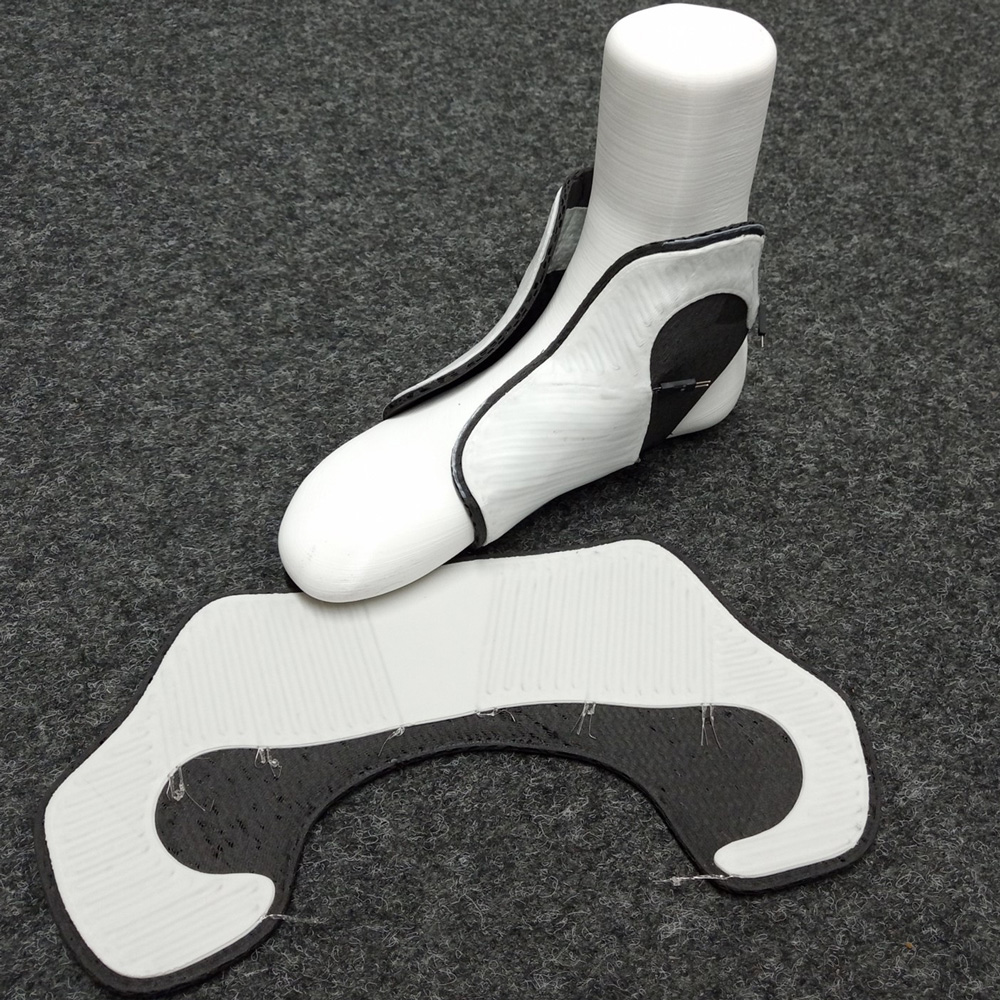
Patient-specific orthoses with reversible formability/adaptation

Challenge
Orthoses are typically used to immobilize individual joints or joint chains and should be custom-made or adjusted to achieve the best possible effect for the patient.
Solution
With WEAM (Wire Encapsulation Additive Manufacturing), orthoses can initially be printed in 2D to the individual size and pre-dimensioned for the individual body measurements. Thanks to integrated (printed-in) heating wires, they can then be optimally adapted to the individual anatomy. The integrated wire is heated by electrical resistance, causing the plastic coating to warm up to the softening temperature. The plastic then becomes as easily formable as modeling clay. After cooling, it becomes stiff again, fulfilling its intended support function optimally. The advantage over prefabricated standard orthoses is the individual adaptability, which is also possible during the course of treatment by reheating the plastic to adjust to changing treatment conditions.
Compared to three-dimensionally printed aids, WEAM orthoses require less printing time and are less prone to errors due to their flexible adaptability. Another advantage of wire-integrated orthoses is the simple handling of the system, as there is no time limitation in the adjustment process compared to conventional orthoses made from standard material (thermoplastic, which is heated in a water bath or oven). This means that the soft, formable state of the orthosis can be maintained independently of time, unlike the current iterative process in patient fitting (heating - forming - heating - forming, etc.). Repeated heating of the orthosis in a water bath or oven is no longer necessary, leading to an overall shorter fitting time.
Insight into the Project
Video about the project
Publications
- Expansion of the Fused Filament Fabrication (FFF) Process Through Wire Embedding, Automated Cutting and Electrical Contacting
March 2021 IEEE Access PP(99):1-1 DOI:10.1109/ACCESS.2021.3065873 LicenseCC BY 4.0 - Fused Filament Fabrication of Actuating Objects
July 2022 DOI:10.1002/mame.202200214 LicenseCC BY 4.0
 Fraunhofer Institute for Machine Tools and Forming Technology
Fraunhofer Institute for Machine Tools and Forming Technology